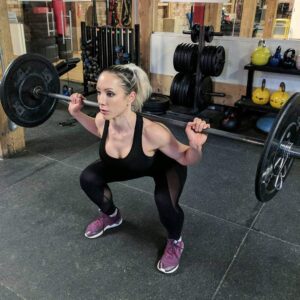A Close Call on the Soccer Field
The sun was a blazing orb in the sky as I sprinted down the soccer field, my heart pounding hard in my chest. My eyes were laser-focused on the ball whizzing through the air towards me. As I lunged to intercept it, I felt a sharp pain slicing through my hamstring. The world spun and I crumpled to the ground, clutching my throbbing leg. It was my first sports injury, and it was a wake-up call. Now, as a personal trainer, I want to help others avoid the same fate.
Understanding Common Injuries
Everyday activities, whether it’s a competitive sport or just carrying groceries, can lead to common injuries. Sprains, strains, and tears are frequent in sports, while at home, fractures and back injuries often occur due to falls or improper lifting techniques. These injuries can be painful and debilitating, disrupting your daily life and activities.
Causes of Common Injuries
Injury prevention begins by understanding the root causes. Often, injuries occur due to lack of proper warm-up and cool-down practices. Ignoring pain and overexerting yourself can also lead to serious harm. Furthermore, poor technique or posture during exercise or physical work can strain your muscles and joints.
The Importance of Injury Prevention
Preventing sports injuries or injuries at home is crucial due to their impact on daily life and performance. An injury can sideline you from work or sports, causing significant disruptions. Moreover, the costs associated with medical treatment and rehabilitation can be substantial. Therefore, injury prevention should be a priority for everyone.
Basic Principles of Injury Prevention
The first step to prevent common injuries is to always warm up before any physical activity. This helps prepare your body for the upcoming exertion and can significantly reduce the risk of injuries. Cooling down is equally important as it allows your body to gradually return to its resting state.
Proper training and technique are also crucial. Whether you’re lifting weights at the gym, or carrying a heavy box at home, using the correct form can prevent unnecessary strain on your muscles and joints. If you’re unsure about the proper technique, consider working with a personal trainer or seeking online training resources.
Remember, injury prevention is not just about avoiding pain. It’s about maintaining your quality of life and continuing to do the things you love. So, take these safety measures to heart and protect your well-being.
Whether you’re a professional athlete, a weekend warrior, or just someone trying to stay active, these tips can help you avoid common injuries and stay healthy.
Practical Measures to Prevent Injuries
When it comes to injury prevention, the key lies in the gradual increase in activity levels. In other words, don’t rush into intense workouts or activities without proper preparation. Start with light activities, then slowly ramp up the intensity and duration as your body adjusts. This approach helps your body strengthen and adapt, reducing the risk of strains, sprains, and other injuries.
Strength and balance training is another essential component of injury prevention. Strength training increases the resilience of your muscles, tendons, and ligaments, while balance training enhances your proprioception – your body’s ability to sense its position, movement, and balance. Both are vital for protecting your body from injuries, especially in high-impact activities and sports.
Finally, never underestimate the importance of regular rest and recovery. Overworking your body can lead to fatigue and overuse injuries. By giving your body time to rest, you allow it to repair and strengthen itself. This includes getting enough sleep, hydrating, and refueling with the right nutrients.
Safety Equipment and Its Role in Injury Prevention
In sports and physical activities, using the correct gear is paramount for injury prevention. From helmets and mouthguards to knee pads and appropriate footwear, each piece of equipment serves a specific function to protect your body.
But injury prevention extends beyond sports. Using safety equipment at home can also prevent falls, burns, cuts, and other injuries. This includes simple measures like using non-slip mats in the bathroom, installing safety gates for young children, and wearing protective gloves when using sharp or hot objects.
Benefits of Professional Guidance in Preventing Injuries
Professional guidance plays a crucial role in preventing injuries. Physiotherapists and fitness trainers can provide personalized advice, guide you through safe exercises, and help correct improper body mechanics that may lead to injury. They can also help design a balanced workout routine that strengthens your body without overworking it.
Additionally, regular health check-ups are essential for early detection of any potential health issues. By keeping track of your health status, you can address minor issues before they become major problems, and adjust your lifestyle and workout routine as necessary.
In Summary: Reducing the Risk of Common Injuries
In conclusion, reducing the risk of common injuries involves a combination of practical measures such as gradually increasing activity levels, incorporating strength and balance training, and ensuring regular rest and recovery. Utilizing safety equipment, both in sports and at home, can significantly reduce injury risks. Professional guidance from physiotherapists and fitness trainers, coupled with regular health check-ups, provides invaluable support in your injury prevention efforts. Remember, preventing injuries isn’t just about staying healthy; it’s about maximizing your potential and enjoying your chosen sports and activities to the fullest.









